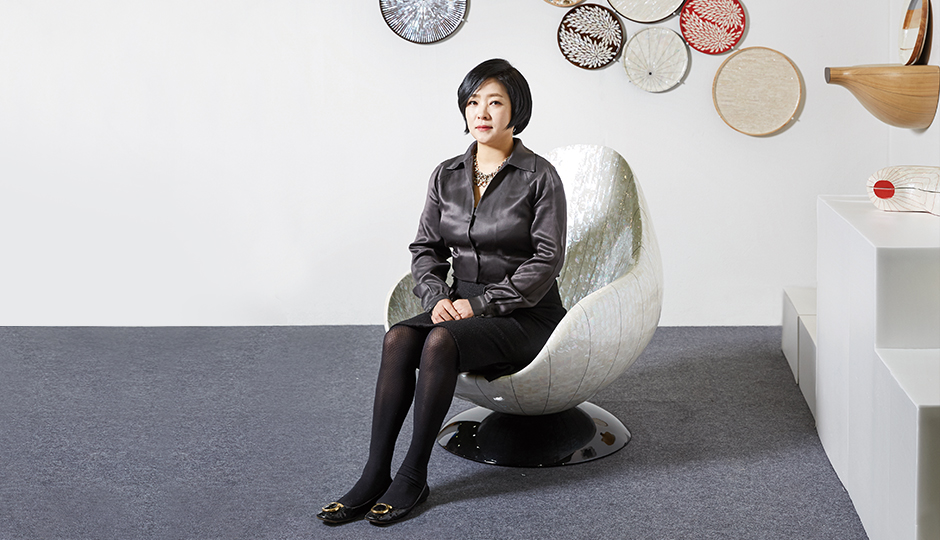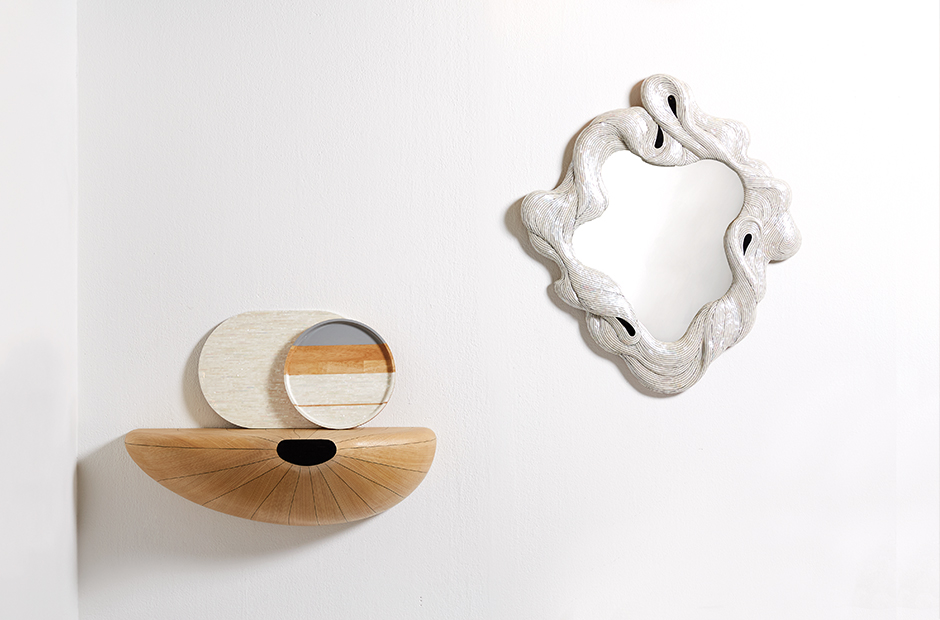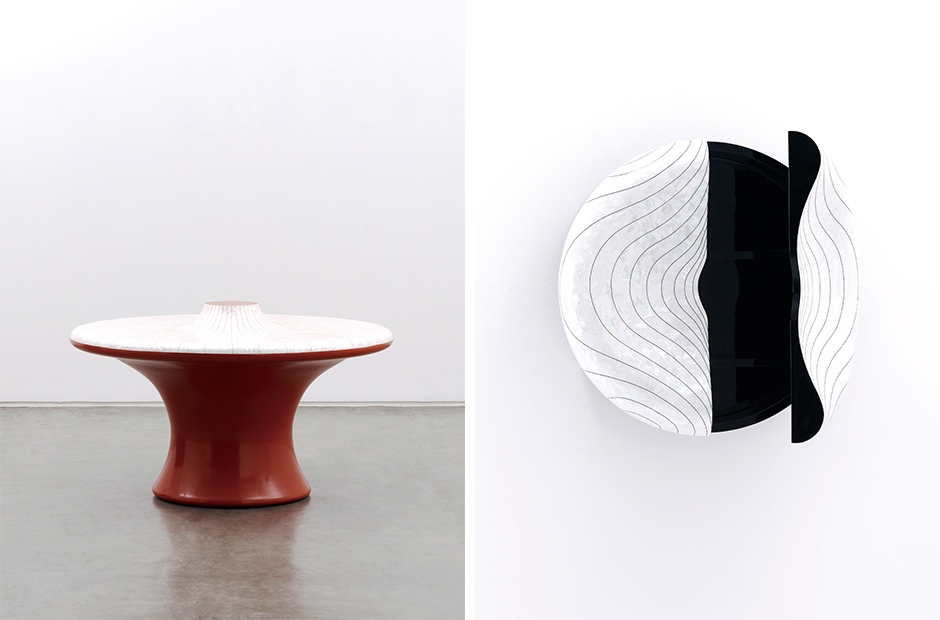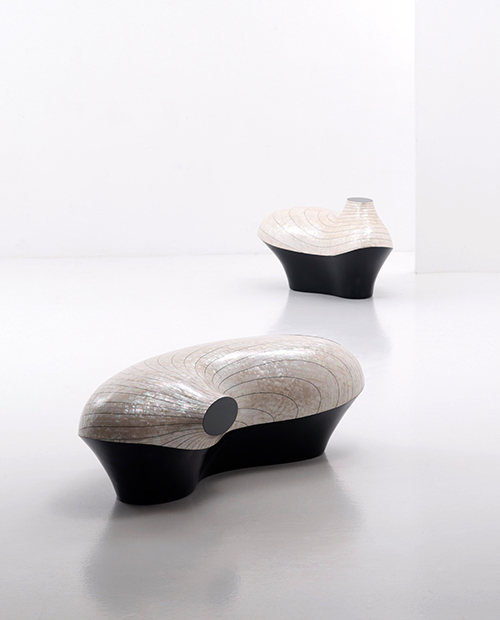
Kang Myung Sun
Please explain the cover piece.
This sofa clearly shows the characteristics of my work. In terms of forms, I tried to emphasize the volume of the mass while maximizing the color vibrancy of the mother-of-pearl. I inserted a sponge into the seat and finished it with leather for comfort. The backrest has also been designed ergonomically for comfortable seating.
Did you intend to combine masculine forms with feminine colors?
If you have noticed masculinity in my work, it is probably because of the volume of the organic forms that I preferred. Art furniture, unlike the mass-produced furniture, must not have thin legs or a separation between the backrests and the seats. I am mostly fascinated with organic forms because I disliked the fact that the traditional mother-of-pearl creations have been limited to plane shapes back in graduate school, where I started using mother-of-pearl as the main material. However, transforming the mother-of-pearl into different organic shapes is a difficult process.

Nevertheless why did you choose the labor-intensive traditional method?
I had a turning point than a reason. I thought that the mother-of-pearl was a traditional Korean material back in college, but I was surprised to find out about the mother-of-pearl piece by Eileen Gray, who worked with a wide range of designs from accessories to architecture. It was the first time I realized that the mother-of-pearl is also used in the West, and I discovered the possibility of a contemporary variation of the mother-of-pearl . However, I want to avoid having my work being evaluated as a contemporary variation of the traditional mother-of-pearl techniques. Mother-of-pearl is just the material that I have chosen and the methodology of designing art furniture that I am pursuing to make.

I can assume that you would face many obstacles because art furniture is not very popular in Korea.
Just as the ordinary design of traditional mother-of-pearl does not correspond with today’s lifestyles and living spaces, we need to change our perception about furniture. As you said, Korea has a small furniture market with relatively low level of awareness compared to the other markets abroad. My work, for instance, is considered oriental in a foreign market because of its mother-of-pearl. They also respect handicraft, and art furniture is highly valued for that reason.
Your creations seem to require a very complicated process.
As I have already mentioned, the mother-of-pearl has a very hard texture, so you have to work on it gradually to be able to make it into the shapes you want. I used an iron to attach the little pieces one by one, and it took me one to two months just to make a small lamp. Many people are telling me that I am overworking myself for nothing, but I am not fully satisfied with 2D work that takes less effort. No matter how others think or say, the entire process gives me pleasure. When I was young, I was much more result-oriented that I only wanted to come to the conclusion as fast as I can, but now I value the means more than the end. So now I can barely finish making a piece after repeating the clear coating process that we also use for car coating at least ten times.

Is there a reason why you use FRP instead of wooden patterns?
Wooden patterns are used for larger pieces like tables and sofas while fiberglass-reinforced plastic (FRP) is used for making smaller accessories, but FRP is more costly. I used to stick mother-of-pearl for the line work, which is the signature of my work, but I prefer taping now because it makes a smoother finish.
What kind of effort do you think you need to make in order to meet the universal sentiments of the world as a Korean artist?
One of the reasons I have been organizing and opening more exhibitions abroad than in Korea, I think, is that what we call “our very local work” can be appealing to them. It is really about whether the works reflect the Korean sentiments that have been embedded and inherited throughout the Korean history than trying to intentionally modernize or make a typical Korean style work.
Please tell us about your plans for the future.
Resuming to work after three to four years, I find the whole process fun and exciting. The first fair I will be participating in will be the ‘Craft Trend Fair’. I do not have a big, ambitious masterplan, but the more I genuinely enjoy this process of creation, the more names of the works will be added onto my career list over time.
